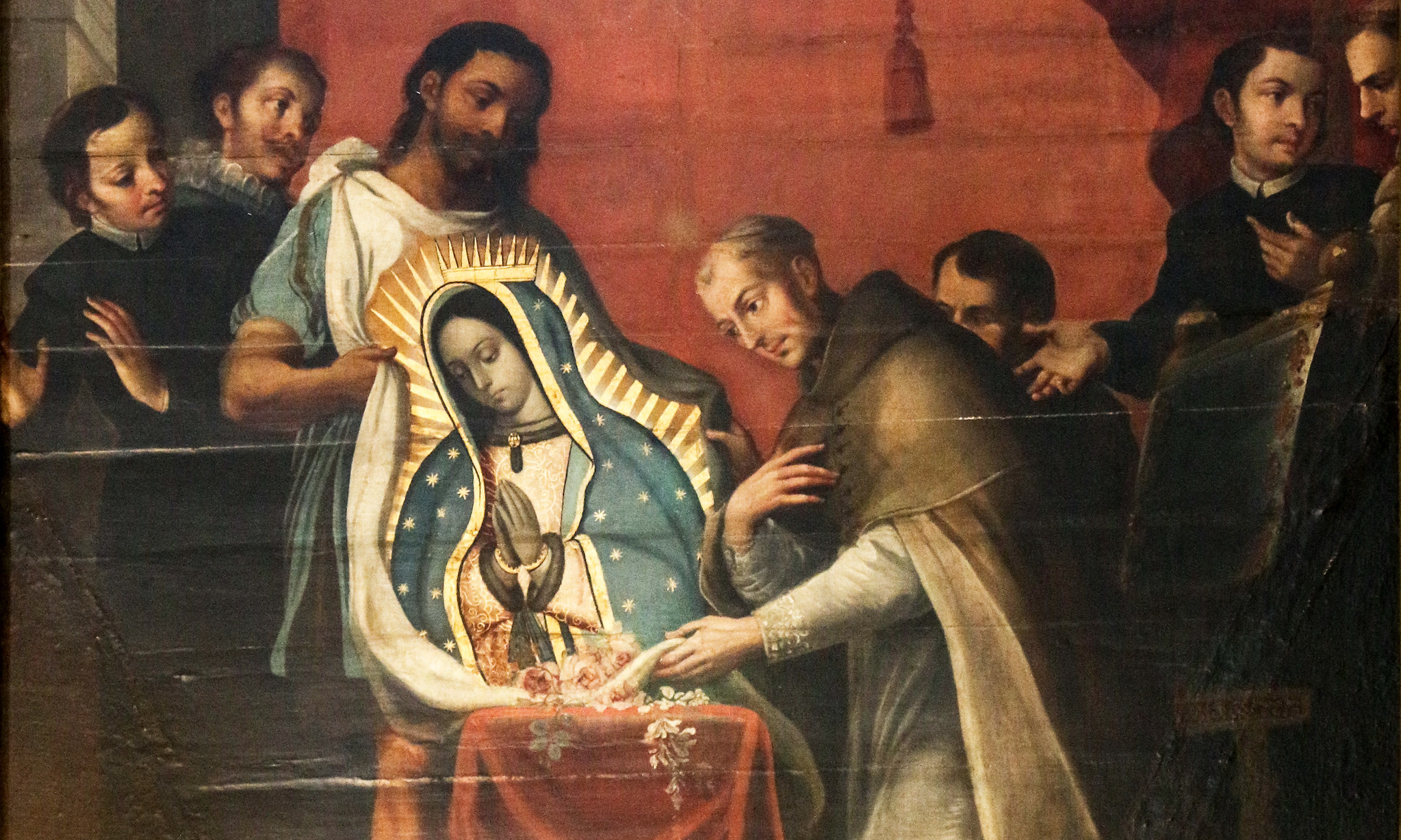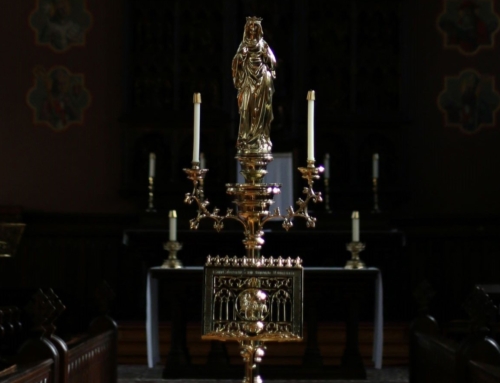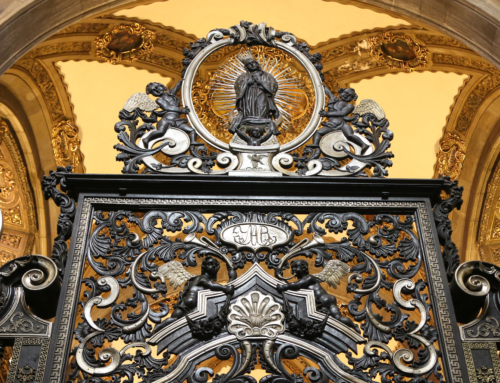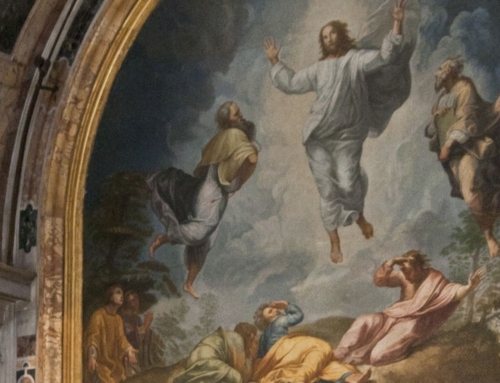When Jesus saw his mother, and the disciple whom he loved standing near, he said to his mother, “Woman, behold your son!” (Jn 19:26)
The miraculous image of Our Lady of Guadalupe, prominently displayed in so many churches and homes, has to be one of the most familiar sights in the Catholic world. For the feast today, some nine million pilgrims are crowding into the New Basilica in Mexico City, hoping for a closer look and a few moments of prayer on one of three moving sidewalks that pass directly beneath the tilma. Although they may not realize it, in the image above them the mother of Jesus continues to behold her sons, just as she did on December 12, 1531, and just as she has done wherever the Lord’s beloved disciples have gathered since Calvary.
As Carl Anderson and Msgr. Eduardo Chávez describe in Our Lady of Guadalupe: Mother of the Civilization of Love (Doubleday, 2009), there’s much more to this picture than meets the eye. Mary appears with dark skin, clothed in the imperial blue of Aztec royalty. She is the “woman clothed with the sun, with the moon under her feet” (Rev 12:1), an image which would have truly startled a culture which worshiped both the sun and the moon as gods. Significantly, Mary does not appear on her own: the placement of her belt indicates that “the Virgin is a lady of Advent,” for Our Lady of Guadalupe carries in her womb the long-expected Messiah (Our Lady, 34-37). Beyond all these other details, however, one particularly comes to mind: reflected in the eyes of the Mother of God is the motley crew of her 16th-century sons.
Almost four hundred years after the apparition, modern technology enables us to see the several human figures reflected in minuscule in both of the picture’s eyes. Not only this, but these tiny reflections in the pupils appear to follow the laws of human sight, according to work done on the image in the twentieth century (Our Lady, 30). Considering that you need over 2000x magnification to make out fully the thirteen characters present, the “Purkinje-Sansen effect” Anderson and Msgr. Chávez mention is really an unnecessary bonus to the miracle itself: any skeptic would have a hard time trying to explain how a forger from five hundred years ago could ever foresee that we could look at the image so closely, somehow imprint such a tiny image on such fragile material, and then also capture accurate ophthalmological proportions. Call it a miracle; any other name starts to sound unscientific.
Beyond the apologetics, the theology is simple: the Blessed Mother, as our mother, looks on the disciples of Jesus with love. As the Catechism explains, quoting the Second Vatican Council,
Jesus is Mary’s only son, but her spiritual motherhood extends to all men whom indeed he came to save: “The Son whom she brought forth is he whom God placed as the first-born among many brethren, that is, the faithful in whose generation and formulation she cooperates with a mother’s love” (CCC 501, citing Lumen Gentium 63).
Just as Jesus desired to be born of a woman so that we might be reborn as adopted sons of God, so too he gave us his own mother to intercede for us at the foot of his cross: “Then he said to the disciple, Behold, your mother!” (Jn 19:27). Through all times and across all cultures, Mary wants nothing more than to bring us to her divine Son and to see reflected in us what she sees perfect in him.
Every day, as we say or chant the Salve Regina, the Dominican brothers pray the words: Eia, ergo, advocata nostra, illos tuos misericordes oculos, ad nos converte! Turn then, most gracious advocate, thine eyes of mercy towards us! May our Lady of Guadalupe always turn her gaze toward us, a sinless gaze which never knew hatred or envy, and may her prayers this Advent bring to birth in us sinners the perfect reflection of her Son.
✠
Photo by Fr. Lawrence Lew, O.P. (used with permission)







